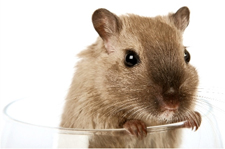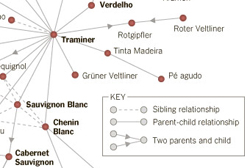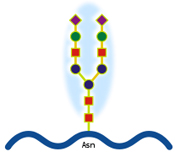Dr Vino's wine blog
wine talk that goes down easy
Cooked wine: how temperature affects fine wine
Don’t store fine wine in a sauna or on your take it with your next jungle expedition. But you knew that. Did you know that a wine’s can be chemical structure can be permanently altered within 18 hours at 86 degrees F (30 decrees C)? And did you know that 90% of wine shipped from France to China reaches 86 degrees, according to one analysis?
Well, for that and more, get on over and check out my article on why shipping temperature matters and what one company is doing about it.
A lightstruck rod of controversy
In yesterday’s post about the advantages that craft beer has over wine, I mentioned both price and more consistency from a lack of cork taint as well as vintage variation. However, even in the series of articles over on San Francisco magazine, a group of tasters blind tasted three bottled beers vs draft pours of the same beer and two of the bottled beers were “lightstruck” (including one in a brown bottle). Read more…
Sobriety pill wants to take the kick from champagne
 Would you drink wine if it weren’t for the alcohol?
Would you drink wine if it weren’t for the alcohol?
Researchers at UCLA are threatening to put this difficult question to wine enthusiasts as they move a “sobriety pill” to clinical trials. Of course, we already have a device for sobering up: the credit card statement. But the researchers are working with extracts of the oriental raisin tree that have been used to treat hangovers in China for five centuries. The pill, based on dihydromyricetin (DHM), a component of the extract, has been found successful in reducing the effects of alcohol and hangovers in lab rats. That’s right, rats fed the substance after binging on alcohol no longer craved greasy breakfast nor did they spend the morning avoiding bright lights and loud noises! Read more at NewScientist.com.
The researchers say they are developing the pill to combat alcoholism, which seems debatable. But it does lay bare the motives for wine enthusiasts: would you continue to pay for and provide tasting notes for fermented grape juice if it gives you the same buzz as Welch’s?
Or would you actually drink more knowing that you could taste through every wine in a given region, pop a sobriety pill, drive home and go for a five-mile run in the morning?
Headaches, histamines and GM yeast [ML01]
 Hennie van Vuuren (right) suffers headaches after drinking young red wine. As a result, the professor in Biotechnology at the University of British Columbia has spent a large part of his professional life researching why. His solution: ML01, a genetically modified yeast.
Hennie van Vuuren (right) suffers headaches after drinking young red wine. As a result, the professor in Biotechnology at the University of British Columbia has spent a large part of his professional life researching why. His solution: ML01, a genetically modified yeast.
It’s a coincidence that as Mark Bittman laments the lack of labeling of GM foods at nytimes.com, a story making the rounds in the Canadian press touts a “new” strain of genetically modified yeast for wines called ML01. According to the Vancouver Sun story by Randy Shore, ML01 is so prevalent that “If you drink red wine from the United States or Canada, there’s a good chance you’ve tried ML01 wine already.” You wouldn’t know about it because of the lack of labeling requirement.
I corresponded with Hendrik van Vuuren to learn more. Read more…
Grape sex, Snooth, icewine fraud, Aussie beer — sipped & spit
SPIT: repurposed content
Snooth.com, a site that ranks high in search results yet often offers frustratingly little hard information, has been scraping Cellartracker content, the Vintank blog suggests. The Snooth co-founder admits the content has “slipped through” their Ph.D. programmers since 2007 and apologizes. The Cellartracker founder comments on the post to say he has emails from 2008 contradicting several points in the apology post. As they say in the Twitterverse: oh, snap!
 SPIT: sex
SPIT: sex
According to a new study, wine grapes lack genetic variation because of asexual reproduction, making them susceptible to pests and/or disease. This may raise use of pesticides or fungicides to unacceptable limits, which leaves growers three options: developing genetically resistant grape varieties, going organic, or cross-breeding grapes to have naturally sturdier varieties. [NYT]
SIPPED: cool wine
FedEx announces temperature controlled trucks to certain hubs, but the last stage of delivery will be in regular trucks. Is half a trip better than none? [winebusiness.com]
SPIT: frozen grapes
The head of the Canadian Vintners Association points the finger at China in recent icewine fraud. [Reuters]
SIPPED: bidding
The auction of Andrew Lloyd Webber’s wine in Hong Kong grossed $5.6 million, surpassing estimates. Sotheby’s cited the consignor’s “proven reputation.” [AFP]
SPIT: suds
Australians are drinking less beer than any time in the past 61 years, according to government statistics. Don’t worry, they’re not on the wagon: wine is growing in popularity. Will “wine” ever be Australian for “drink”? [smh.com.au]
Allergies and wine: glycoproteins
 While sulfites cause a severe allergic reaction in a small number of wine drinkers, one of the puzzles of wine consumption has been what causes headaches (aside from drinking too much). As we have discussed before, histamines that naturally occur in wine could be a cause of some allergic reactions. Now there is something else to consider: glycoproteins!
While sulfites cause a severe allergic reaction in a small number of wine drinkers, one of the puzzles of wine consumption has been what causes headaches (aside from drinking too much). As we have discussed before, histamines that naturally occur in wine could be a cause of some allergic reactions. Now there is something else to consider: glycoproteins!
These proteins, fused with sugars, occur in other fruits such as bananas, tomatoes, and kiwis. And they have been connected to other allergies. Now, a research led by Giuseppe Palmisano of the University of Southern Denmark and published in the Journal of Proteome Research has identified the types of glycoproteins in wine. Here’s how The Economist summed it up for lay people:
To do so he started with a cheeky little chardonnay, treated it with ice-cold trichloroacetic acid and ethanol to precipitate any glycoproteins, then digested those glycoproteins into smaller molecules called peptides that can be analysed by mass spectroscopy. He screened the results against a database of known allergenic proteins. Three stood out. One is similar to allergenic proteins found in latex and pears. Another looks like a second latex protein and an olive protein, both known allergens. The third resembles one of the most rampant allergens of them all, a ragweed protein that causes hay fever.
It’s worth noting that there are likely to be big differences in glycoprotein sequences among wines and that this research was performed on only one wine, a “Chardonnay white wine” as the paper describes it. Further, it was a young wine with the analyses performed within a month of the wine’s “production…to avoid any protein loss.” Asked via email why he chose that particular wine, Palmisano replied “it was the wine we had at that time so we could immediately start the study.”
Once the glycoproteins in a wine are identified, could they be removed to make the wine “allergy-free” as several media accounts have claimed? Palmisano writes via email: “The drawback is that the taste and aroma could be affected by this removal, so it is important to understand how the environment will change upon removal of these compounds.”
More research is clearly needed in this area. Palmisano has no plans for clinical trials.



